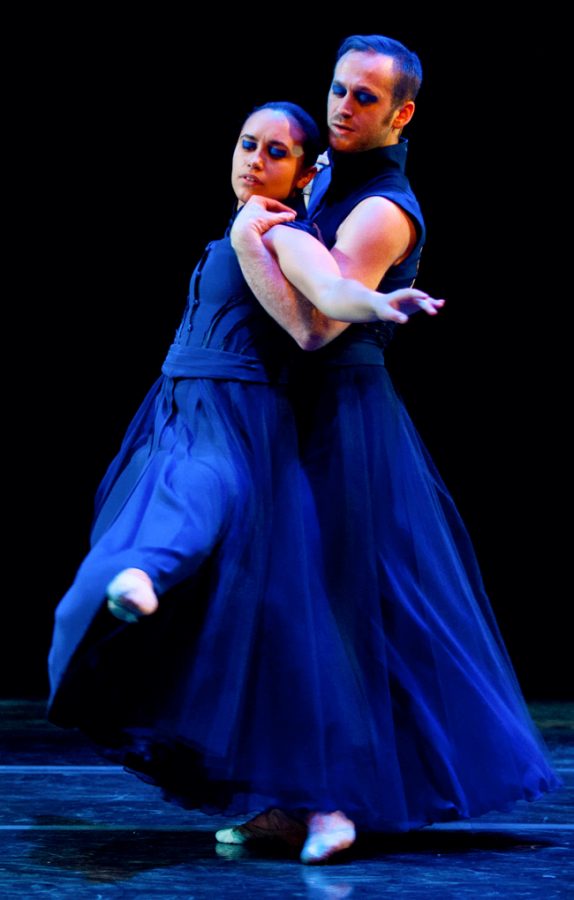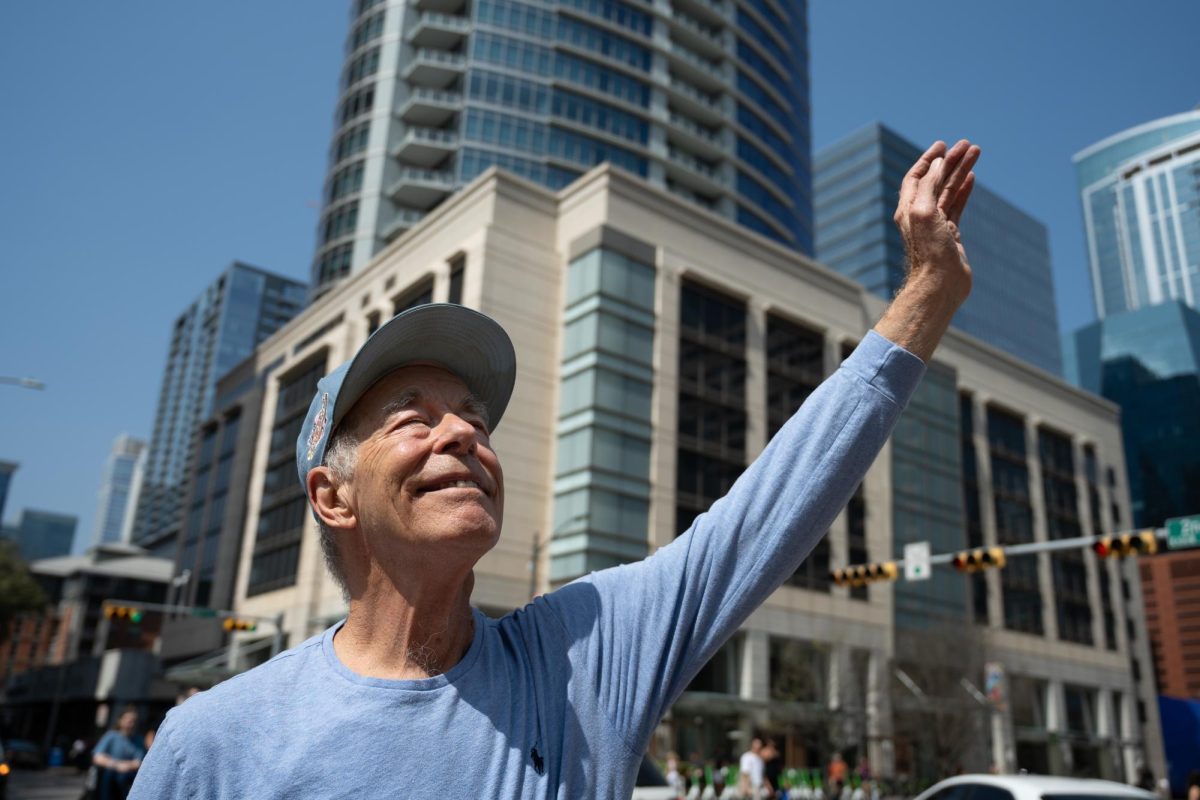Fifteen dancers in The University of Texas at Austin Department of Theatre and Dance followed associate professor of dance Charles Anderson’s vision as they wrote letters to a loved one as if they would never be able to speak to them again. The letters were later read aloud to the class with Anderson stopping them, forcing the dancers to blurt out everything they wanted to say at that moment.
After the exercise, they put words to motion and began dancing “Rite,” a dance that will be performed in this weekend’s showcase titled “Catalyst,” along with three other dances. “Rite” is intended to capture the shifting social, economic and ecological climates of the 21st century, and is about being moved to action, prayer and making positive change.
“I’ve been trying to get used to Charles’ movements, trying to get used to how to portray all of these emotions at once,” said dance sophomore and “Rite” performer Avery Hurst. “It’s not the hardest dance physically, but it’s emotionally draining because the whole time you dance you think about your letter.”
“Catalyst” is a modern and classic dance performance by nationally and internationally renowned choreographers Ohad Naharin, David Justin, Yacov Sharir and Charles Anderson. The Dance Repertory Theatre, the Department of Theatre and Dance’s student dance ensemble, will perform four dances throughout the weekend for students, faculty, parents and locals.
“These dances show off our ability to dance and emote, our ability to express ourselves,” said dance senior and dancer in “Rite” and “Minus 16” Caitlin Poulton. “Each dance enables us to connect even more to both the audience and ourselves.”
Performances in “Catalyst” will range from David Justin’s “Oblivion’s Ink,” a contemporary ballet ensemble; Yacov Sharir’s “Too and For,” a technology-inspired dance that explores corporeality in the physical realm as well as the virtual domain; and Charles Anderson’s “Rite,” inspired by the writings of the late American science fiction writer Octavia Butler.
Additionally, the presentation of Naharin’s “Minus 16,” a 30-minute ensemble that takes up the entire second act and has been rehearsed since the fall, will close the show. “Minus 16” is historic for the Department of Theatre and Dance, as it is the only university program that has been given the rights to perform it in its entirety.
“[‘Minus 16’] is a legendary dance. It’s just a once-in-a-lifetime because UT dancers are getting this opportunity,” Poulton said. “Knowing that makes this a true honor.”
Stacy Skolnik said that though both are technically demanding pieces, “Too and For” is more physically challenging with numerous lifts, whereas “Minus 16” is a more natural, free-flowing dance.
“I like ‘Minus 16’ because it’s different and the movements are much more subtle,” Skolnik said. “The movement is very pedestrian-like, yet creates a beautiful dance. It’s also unusual because we do go into the audience; it’s just very interactive.”
Despite discrepancies in rehearsal time, with some dances only having a few weeks to be perfected, the dancers have a passion for dance that they say has been ingrained in all of them for as long as they can remember and carries them through stressful rehearsals. Performances are the moments they live for, dancing for themselves and bringing to life the choreography they have been given.
“I don’t want them to leave feeling empty, but instead with a sense of wonder,” Hurst said. “I want them to feel just like I do when I see a dance production. I want them to have an open mind, and to make their own story.”















